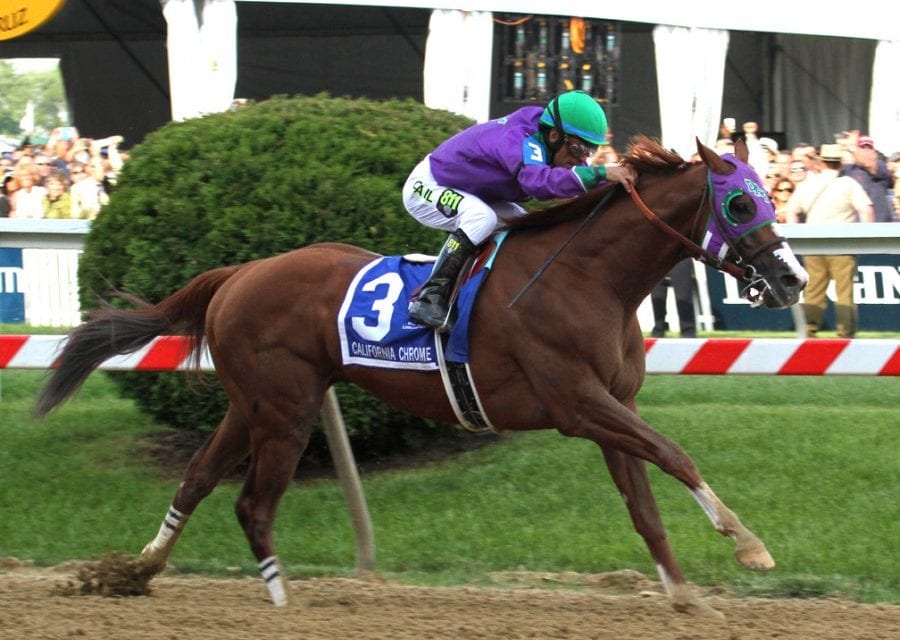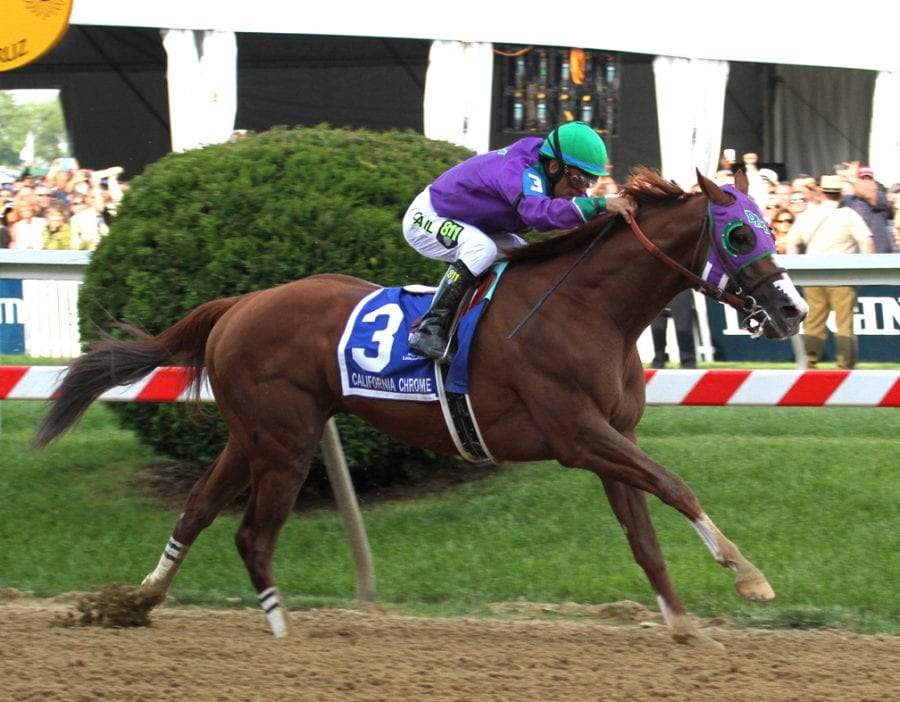by Frank Vespe
Among the three Triple Crown races, the Preakness produces the “truest” results. The best horse, in other words, wins the Preakness more often than he (or she) wins either the Kentucky Derby or the Belmont.
The 20-horse cavalry charge of the Kentucky Derby — often led by a no-hope sprinter who’ll fade after three-quarters — places a premium on racing luck, while the 12-furlong distance of the Belmont is increasingly anachronistic in the modern speed- and precocity-favoring American racing game. The Preakness, meanwhile, is more similar than either of the other races to what the horses have done before, or will do again.
In fact, the post-time favorite has won just over half of all runnings of the Preakness. In Louisville, on the other hand, the betting favorite has worn roses a little more than a third of the time, including a remarkably bad 4-for-33 run that ended in 2012.
All of those facts — and more — make the Triple Crown the elusive “racing unicorn” it’s become. But perhaps that’s changing.
It’s been de rigeur in recent years to bemoan (often with good reason) the rapacious nature of Churchill Downs, Inc., which owns the famed racetrack and its signature race. And when, prior to the 2013 Kentucky Derby, it instituted a “Derby points” system to determine which horses would start if more than 20 were entered, it was easy enough to point out that it had included some races of questionable value while excluding, for example, the Illinois Derby, which had produced 2002 Kentucky Derby-Preakness winner War Emblem, 2006 Kentucky Derby post-time favorite Sweetnorthernsaint, and 2009 Kentucky Derby show horse Musket Man. And it was easy to find horsemen who believed that accruing points and doing what was right for the horse might sometimes be at odds. And of course, it was clear as a bell that it put Churchill Downs, Inc. in the position of determining — not just for its race but really for racing itself — which three-year-old winter and spring races matter.
And, yet, oddly enough, the system’s first three years have produced something not seen in a long, long time: three consecutive editions of the Kentucky Derby won by the favorite. The last two of those, American Pharoah on Saturday and California Chrome last year, were won by horses getting a good stalking trip into a decent but manageable pace (something else a little bit novel).
While from a betting perspective, a steady parade of favorites gets old (and expensive), from a “winning the Triple Crown” perspective, it’s not necessarily a bad thing.
The points system puts an emphasis on route races and those run closer to the first Saturday in May. That gives extra credit to horses running well right now at the traditional Derby prep distance of nine furlongs. And that means that horses like Trinniberg — a graded sprint winner whose major contribution to the ’12 Derby was pushing Bodemeister through six furlongs in 1:09 4/5, for which I’ll Have Another was eternally grateful — end up on the outside looking in.
That’s not to say that racing luck doesn’t matter. Materiality’s tardy start and rugged trip on Saturday before closing to sixth are proof of that.
And it’s also not to say that we should expect the run of favorites winning the Derby to continue.
But early returns — and they are early — suggest that the points system may be making the Derby run a bit more like normal race.
If so, that’ll be good for favorites — and, perhaps, for those who hope for a Triple Crown one of these days.









